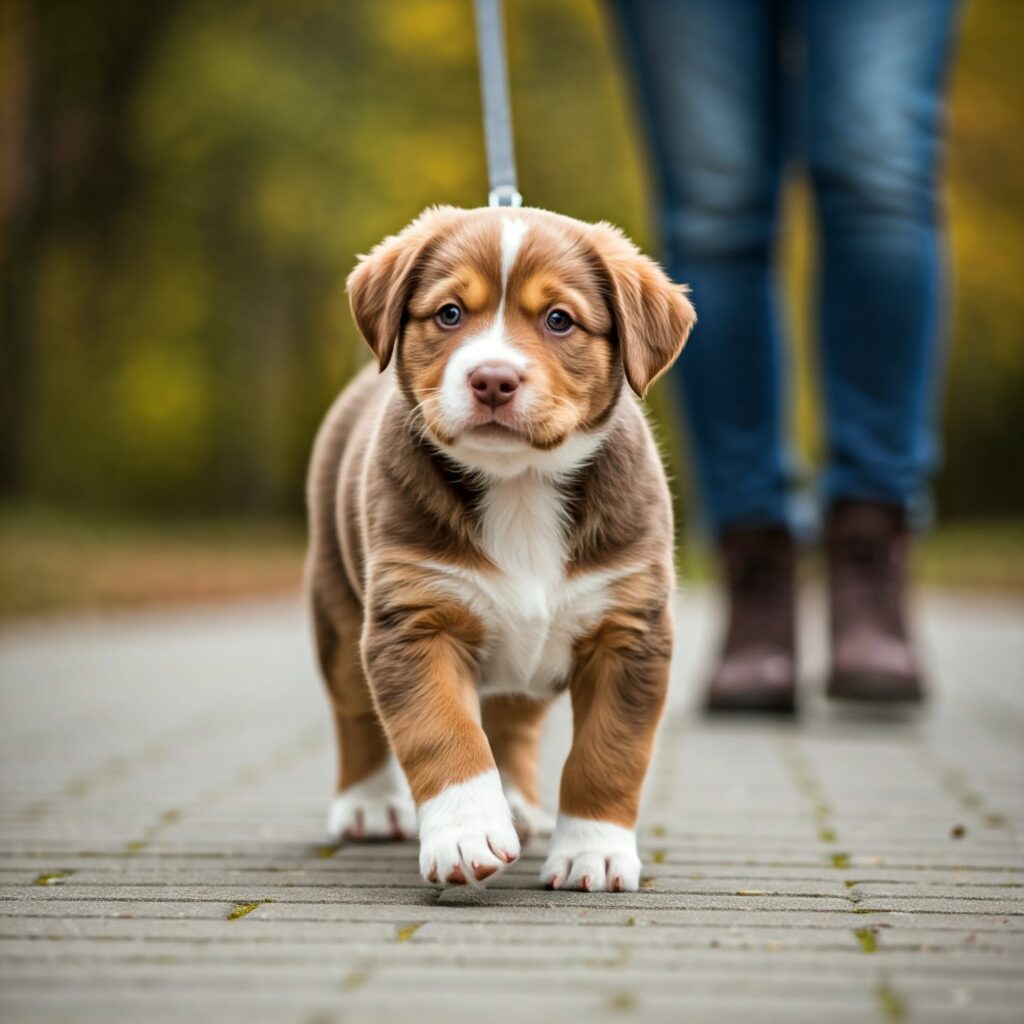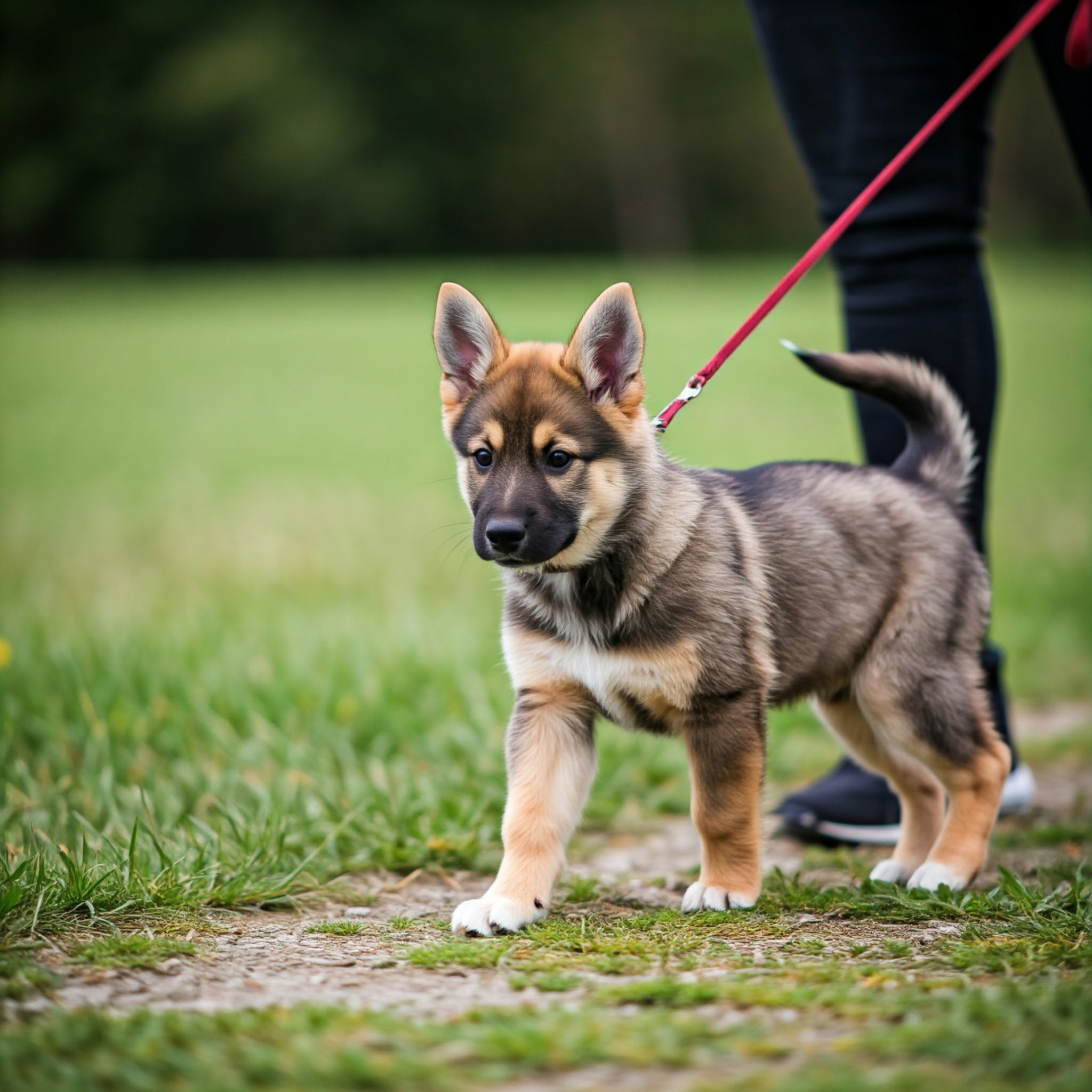Training your puppy to walk on a leash (or lead) can feel daunting, but it doesn’t have to be! Think of it as teaching your furry friend to dance with you—graceful, in sync, and enjoyable for both of you. This guide will show you how to make leash training a positive and rewarding experience.
Why Leash Training Matters

Leash training is an essential skill that helps keep your puppy safe and allows you both to enjoy your walks together. It prevents accidents, ensures your pup behaves in public, and strengthens the bond between you. Plus, who doesn’t love a stroll with their happy, well-behaved puppy?
Choosing the Right Leash and Collar
Before you start, you’ll need the right tools. A comfortable collar and a sturdy leash suited to your puppy’s size are crucial. Avoid retractable leashes for training; they can make it harder to teach your puppy to walk calmly.
Getting Your Puppy Comfortable with a Leash
The first step is to introduce your puppy to their leash and collar. Let them sniff and explore these new items. Try putting the collar on for short periods indoors so your puppy gets used to the feel of it.
Pro Tip: Use treats to create a positive association with the leash and collar.
Starting Indoors: The First Step
Begin leash training in a familiar, distraction-free environment like your living room. Attach the leash and let your puppy drag it around for a while to get used to the sensation. Encourage them with praise and treats.
Introducing Outdoor Walks
Once your puppy is comfortable indoors, it’s time to venture outside. Start in a quiet area, like your backyard or a low-traffic street. Keep the sessions short and positive to prevent overwhelm.
Key Tip: Gradually increase the time spent outdoors as your puppy gains confidence.
Teaching Loose Leash Walking
Hold the leash firmly but loosely, giving your puppy some freedom while maintaining control. Use a command like “Let’s go!”
Reward Good Behavior
Whenever your puppy walks beside you without pulling, reward them with a treat or verbal praise.
Handling Pulling and Tugging
It’s normal for puppies to pull at first, but consistency is key. If your puppy pulls, stop walking immediately. Wait until the leash slackens before continuing. This teaches them that pulling won’t get them anywhere.
Using Positive Reinforcement
Puppies thrive on positive reinforcement. Reward your pup every time they exhibit desired behavior, like walking calmly beside you or responding to your commands. Reward your puppy with treats, lots of praise, or even a fun play session to reinforce good behavior.
Common Mistakes to Avoid
- Using Punishment: Yanking the leash or scolding your puppy can create fear and anxiety. Stick to positive reinforcement.
- Being Inconsistent: Consistency is critical. Ensure that everyone in your home is consistent and follows the same set of training rules to avoid confusing your puppy.
- Overloading with Distractions: Start in a quiet environment before gradually introducing more distractions.
Building Confidence Through Consistency
Puppies learn best with regular, short training sessions. Practice leash training daily, even if it’s just for five minutes. Gradual progress builds confidence and helps your puppy master the skill.
When to Seek Professional Help
If your puppy shows persistent fear, anxiety, or extreme pulling, consider working with a professional dog trainer. They can provide tailored advice and techniques to help you and your pup succeed.
Tips for Success
- Be Patient: Remember, every puppy learns at their own speed, so give them the time they need to grasp new skills.
- Stay Positive: Celebrate small victories to keep the training enjoyable.
- Use High-Value Treats: Save your puppy’s favorite treats for leash training to keep them motivated.
- Practice Regularly: Repetition is the key to mastery.
Conclusion: Building a Lifelong Bond
Leash training is more than just a skill—it’s an opportunity to build trust and understanding with your puppy. With patience, positivity, and persistence, you’ll soon enjoy peaceful walks and create lasting memories with your furry friend.
FAQs About Puppy Leash Training
1. At what age should I begin leash training my puppy?
It’s best to start leash training as early as 8 weeks old, as puppies are more adaptable at a young age.
2. What should I do if my puppy refuses to walk?
Encourage them with treats and praise, and avoid pulling on the leash. Sometimes a short break or a change in direction helps.
3. How long does it take to leash train a puppy?
Every puppy is different, but most take a few weeks to learn the basics with consistent practice.
4. Can I use a harness instead of a collar?
Yes, harnesses are a great option, especially for puppies that tend to pull. Choose a well-fitted harness for comfort and safety.
5. What if my puppy bites the leash?
Redirect their attention with a toy or treat and reinforce calm behavior. Consistency will help them outgrow this habit.

